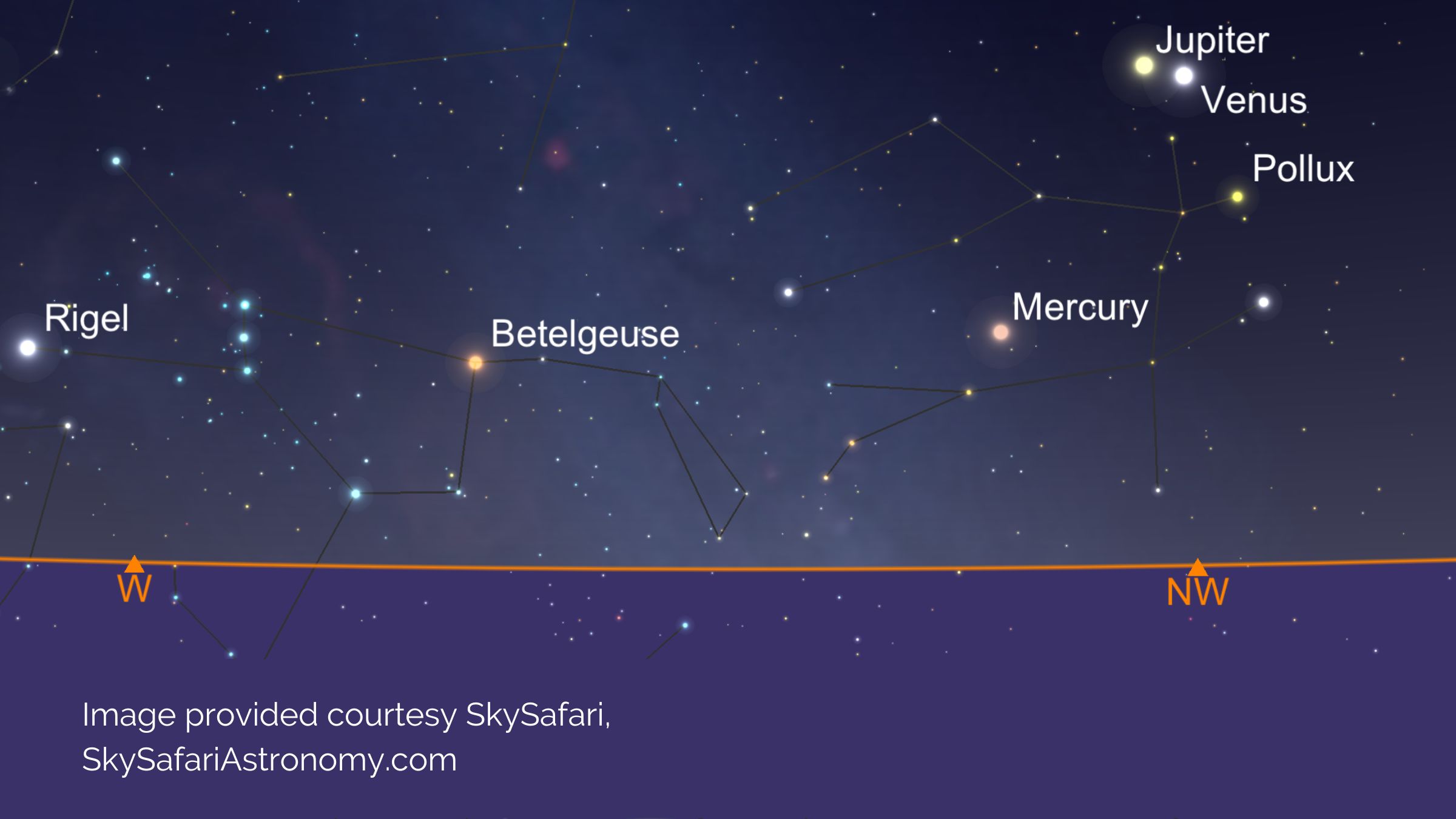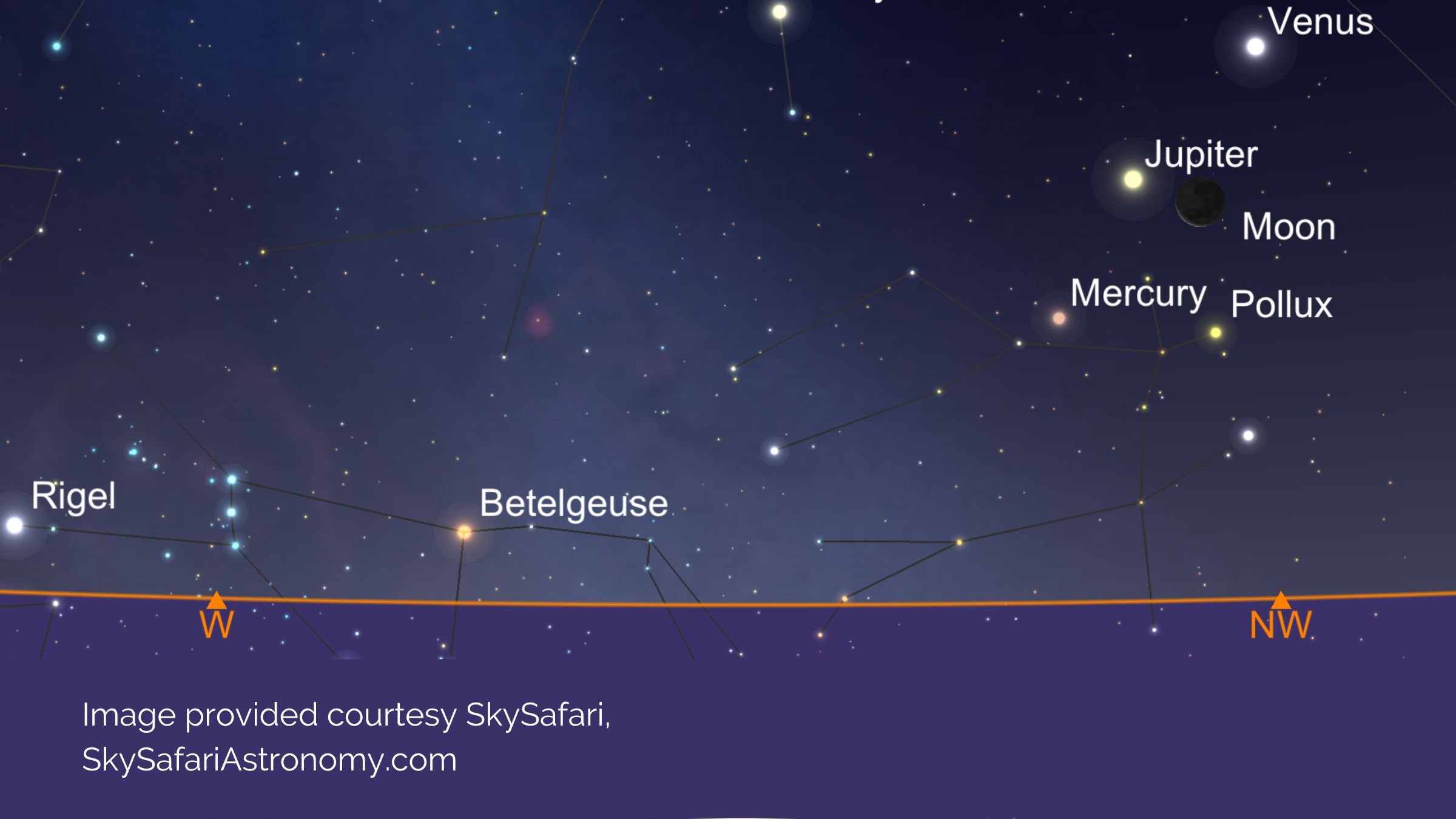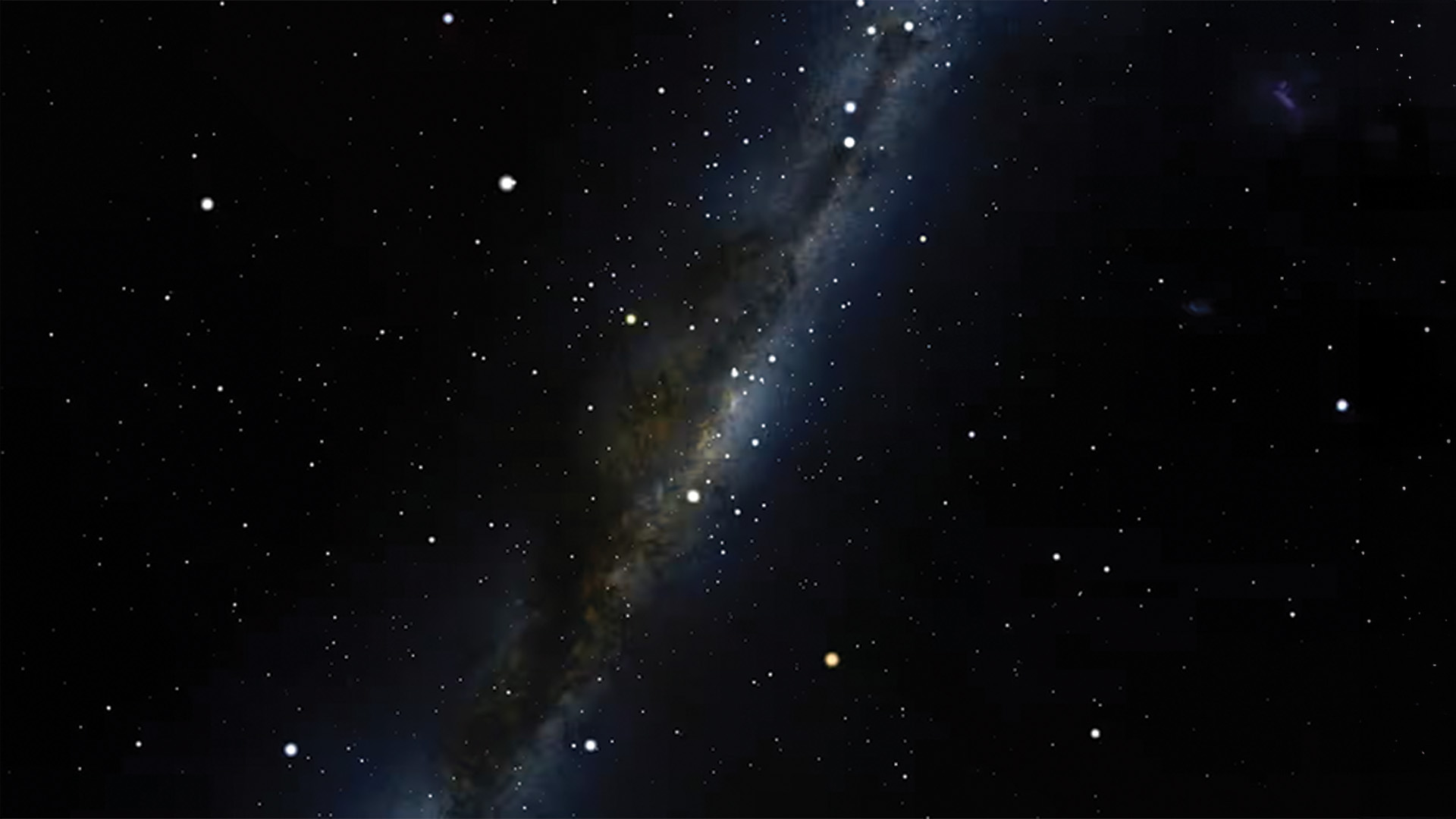Jupiter and Venus Dazzle | 10th June
If you've been keeping an eye on the early evening sky this past month, you'll know that there's been plenty of action when it comes to three of our naked-eye visible planets. Jupiter, Venus and Mercury have been dancing in the evening twilight. Tonight is one of the...
Triple Planets, Twin Stars and a Single Moon | 17th June
The evening delight continues for happy stargazers on 17th June. The three naked-eye planets visible are Jupiter, Venus and Mercury. They appear in the constellation of Gemini. Can you see the two brightest stars of Gemini, Pollux and Castor, below the three planets...
Winter Solstice | 21st June
What happens during solstice? The June Solstice, also known as the winter solstice, marks the day with the most number of night time hours in the southern hemisphere. The Sun appears at its lowest in the sky, with the least angle to Earth, and we receive less sunlight...
Micromoons | 2nd and 31st May, 30th June
You’ve probably heard about 'Supermoons', but what about 'Micromoons'? In the strictest sense, these aren't astronomy terms — 'supermoon' was coined by an astrologer, and some people are still convinced that the extra gravitational 'tug' from a supermoon is...
Milky Way Season | April to October
Astrophotographers call the time of year between mid-autumn and mid-spring ‘Milky Way season’. This period gets its name because of how, in the southern hemisphere, it's the best time of year to see and photograph the Milky Way. When you look towards the centre, or...
Emu in the Sky | June
the Emu in the Sky. Photograph: Stellarium
Noongar calendar six seasons: Makuru
Noongar people are the traditional owners of the south-west of Western Australia and have been for over 45,000 years. In the Noongar calendar, the months of June and July bring the season of Makuru. Mainstream education teaches the four seasons of Spring, Summer,...

Last Quarter
8 June

New Moon
15 June

First Quarter
22 June
Full Moon
30 June
Rises 5:28pm (AWST)








